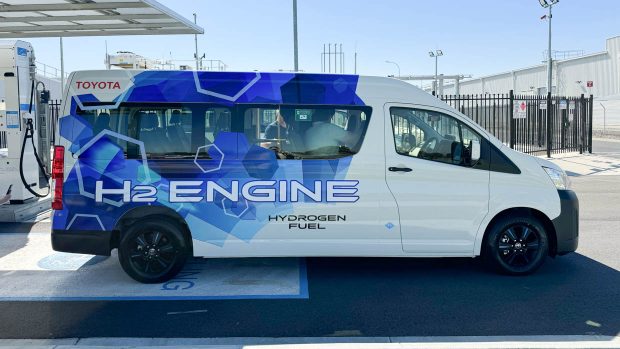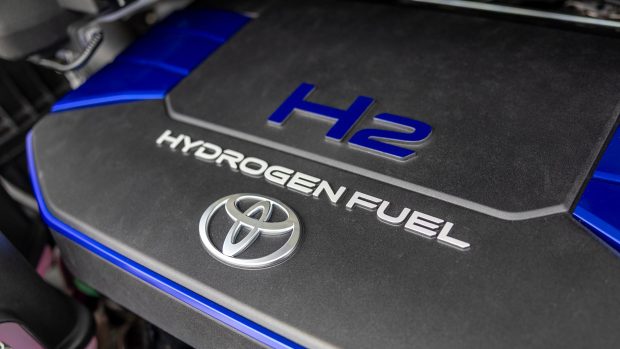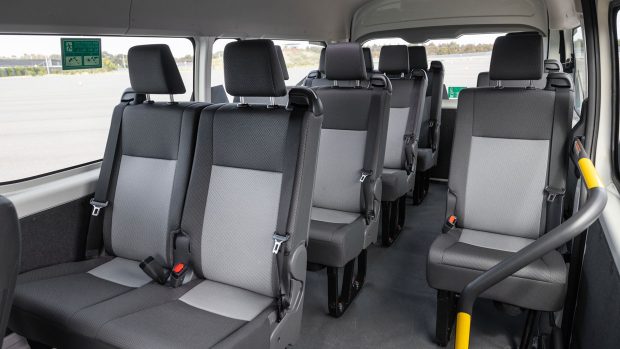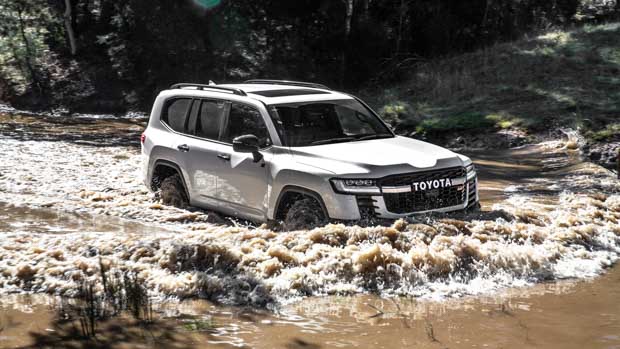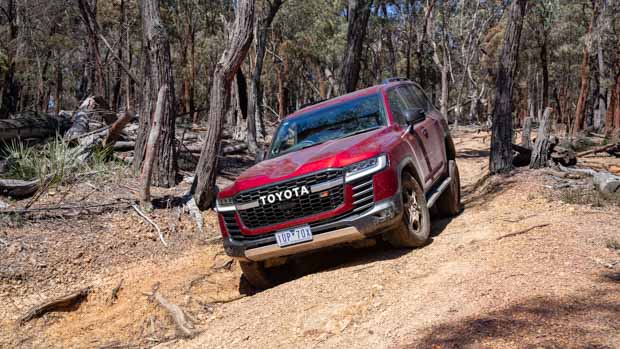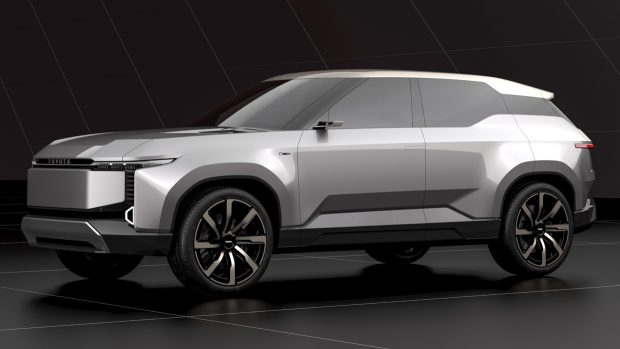-
Car Reviews
- Car News
-
Car Comparisons
Latest comparisons
- Chasing Deals
Could hydrogen-powered engine tech make its way into vehicles such as the Toyota Land Cruiser? According to Toyota there’s a chance it could happen
Toyota has said it’s possible that its latest hydrogen-fuelled internal combustion engine tech could make its way into vehicles such as the venerable Toyota Land Cruiser four-wheel drive.
The comments come off the back of the launch of the brand’s first ever hydrogen-fuelled Hiace van prototype, which already shares its heart with overseas variants of the Land Cruiser 300 in the form of a 3.5-litre twin-turbo V6.
Asked whether the powertrain featured in the Hiace prototype could make its way into vehicles like the Land Cruiser and Hilux ute, Toyota global’s hydrogen factory president Mitsumasa Yamagata said: “yes, there are possibilities to adapt (the technology) into those vehicles including Land Cruiser.”
Speaking to media through a translator at the launch of the Hiace prototype, Yamagata pointed to the “advantage of the technology (which) can be utilised for those vehicles including high towing and high loading.”
He then went on to confirm that Toyota has started a “study” on using the technology in other vehicles, including Land Cruiser – however, the brand is still “studying which technology will be suitable for which vehicle”.
Against the trend of many other carmakers Toyota has forged a unique “multi-pathway” approach to decarbonisation, a particularly complex prospect for non-urban focused vehicles like the Land Cruiser which demand high off-road, towing and long-range capability.
The engine found in overseas variants of the Land Cruiser 300 – and also available locally in the Lexus LX600 – has undergone minimal alterations to make its way into the Hiace hydrogen prototype. Namely, there were changes to its injectors that allow it to run on compressed hydrogen gas instead of petrol.
However, it isn’t as straightforward as simply slotting the hydrogen-fuelled engine into a vehicle like the Land Cruiser.
President and CEO of Toyota Australia Matthew Callachor said “that type of thing is a huge step in its own right.”
“It’s one of the possibilities, but it still obviously requires significant engineering as well,” he added, referencing considerations like how to position hydrogen fuel cells within an existing framework.
With the Hiace prototype range sitting at just under 200km, Toyota has also acknowledged that significant work would still need to be done to boost range for the technology – potentially through bigger hydrogen tanks or the adoption of hybrid technology.
Asked about why the Hiace was chosen as the first vehicle to feature the new powertrain technology, Yamagata said that this came down to more seamless packaging opportunities.
Speaking of the “many reasons” for why the Hiace was chosen, Yamagata said “the first reason is that in terms of (the) hydrogen tanks layout, it was suitable.”
The flexibility of the Hiace – which did not have to undergo any compromises to its exterior styling or interior packaging – as well as its commercial usage transporting heavy loads sealed the deal for it to be the first cab off the rank.
This said, Toyota has been clear about its ambitions to extend application of the tech beyond the Hiace.
Callachor said: “the aim of this (customer trial program) is to enable us to continue to improve and optimise the technology to further expand its potential applications.”
Toyota has been vocal about its “multi-pathway” approach toward emissions reduction, with the local arm of the brand equally outspoken about their view that EVs are unable to provide what “the silent majority” of Australians require in vehicles like the Land Cruiser.
Toyota Australia’s vice president of sales and marketing, Sean Hanley, spoke to Chasing Cars at the launch of the Hiace prototype, spruiking what he believes are the strong advantages of hydrogen-fuelled internal combustion for customers that require a combination of range, towing and off-roading capability.
Hanley spoke of the significant “cost amortisation” that comes with using existing technology, know-how, and supplier bases, which allows for a sizeable cost reduction versus the significant cost involved in engineering an electric vehicle that could equal the range, towing, and off-road capability of the current Land Cruiser.
While it spruiks what it believes are key benefits of hydrogen-power, the brand is firm on its diverse approach to powertrain tech, recently pulling the covers off a concept previewing a planned electric Land Cruiser, likely to sit alongside the current internal combustion version.
The brand is also firm on continuing to develop hydrogen fuel cell electric vehicles (FCEV) like the Mirai sedan, and recent FCEV Hilux ute prototype.
In the meantime, Toyota will start its real-world customer testing of the Hiace prototype this month as the van enters the next phase of its development.
Latest news
About Chasing cars
Chasing Cars reviews are 100% independent.
Because we are powered by Budget Direct Insurance, we don’t receive advertising or sales revenue from car manufacturers.
We’re truly independent – giving you Australia’s best car reviews.

